The alternative appearance of Starbucks in northern Europe ── unmanned shop, coffee, please help yourself!
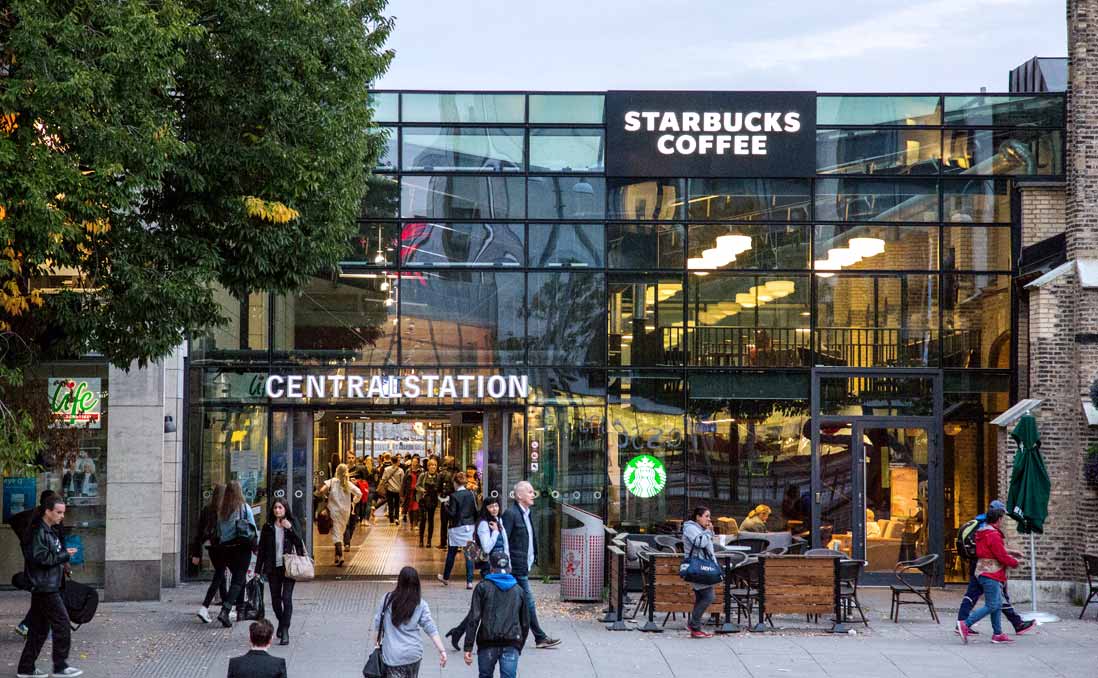
For professional baristas, please follow the coffee workshop (Wechat official account cafe_style)
I heard that Starbucks is going to enter Italy in 2018, which should be exciting news for City Cup collectors (laughter), but I have a pertinent suggestion: buy the cup as soon as possible. Otherwise, it is hard to predict when the stall will close, because the only Starbucks in our city (Malm ö, Sweden) just closed at the end of January this year.
Looking at the countries that drink the most coffee or consume the largest amount of coffee in the world, the top 10 European countries account for the majority. Surprisingly, the Nordic countries are so sparsely populated that they are also on the list.

Chart of countries that drank the most coffee in 2014. Figure / The Atlantic
A hundred flowers bloom in the coffee culture of European countries, such as Italy can start its journey after standing up and drinking a sip of espresso. On the other hand, Fika (coffee break time) in the Nordic country of Sweden is part of social activities. For example, office workers have a 15-minute "Fika" in the morning and afternoon, which is like a class break. As soon as class is over, everyone will gather in the kitchenette to drink coffee, talk and fart, relax their shoulders, and then go back to work.
Try to integrate into Sweden's "Fika" culture, Starbucks adapts measures to local conditions
In addition to coffee, a complete Fika can not do without "Soul supporting role" sweet bread, of which the most classic cinnamon rolls are made by almost every household, and are so popular that recipes are printed on flour bags. Sweden even designated October 4 as "Cinnamon Roll Day". On that day, supermarkets, bakeries and coffee shops offered discounts. Each cinnamon roll has its own weaving method and color, which is basically a double feast of taste and vision.
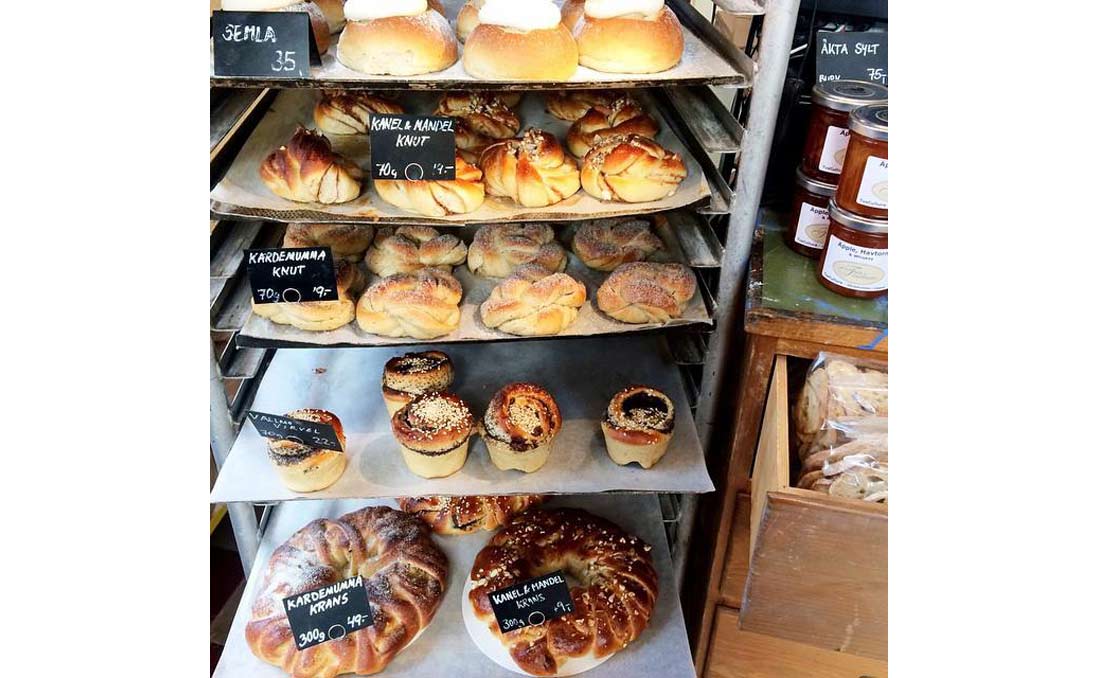
Swedish cinnamon rolls are decorated with small grains of sugar and add flavor, unlike American cinnamon rolls coated with syrup. Photo / G ö teborg/Gothenburg: The Official Guide Facebook page
Perhaps because Fika is a symbol of rest, there are few people who come to study in Swedish coffee shops (you can buy a 450g bag of coffee powder in the supermarket for a cup of coffee, and students have to take care of their pockets). Most of the visitors are nothing more than three or five friends, and a few work with a laptop or an employer for an interview (probably a start-up small company). There are also intimate children's areas arranged like living rooms, with children's books, paintbrushes and small toys. Parents enjoy Fika without fear of their children getting bored or running around.
Back to Starbucks, there are only 18 stores in Sweden, each in nine towns. Due to the vast land and sparsely populated area, most of the stores are located in stations, airports and shopping malls. In addition to the exhibition store, I also found that Starbucks adopted a new sales strategy of ── self-service coffee machine in northern Europe according to local conditions.
No one serves coffee shop, "get down" and sell coffee.
The first time I saw self-service coffee was sailing on a ferry between Denmark and Germany, after a tour of duty-free shops and hot dog stalls, I strolled into the mini convenience store and turned around the narrow shelves to find the corner mermaid Logo, paper cups and automatic coffee machine, DIY! Although self-help is not uncommon in northern Europe, this is the first time I have seen Starbucks "put down its posture" to sell coffee. It only sells coffee without other surrounding merchandise.
The second time we met in the terminal corridor of Copenhagen airport, one of the highlights of the passenger lounge was the simple log decoration of the self-service Starbucks shop ──, a coffee maker with focused lights on the table, and a familiar hand-painted backboard and sign.
As for how to pay if no one takes care of the shop? After pressing the items in the electronic panel of the coffee machine, you can swipe your card directly (unable to pay cash), moving towards a cashless Scandinavia, where personnel costs can be saved even by selling coffee. The same shop once appeared in Swedish universities as a pop-up shop, asking college students who like to taste fresh to wait in line to buy a drink.
This unmanned shop sales model reminds me that every outdoor festival, I must see several "coffee tricycles", a small one does not take up space, tourists can continue to shop, and the coffee is still delicious, I love it!
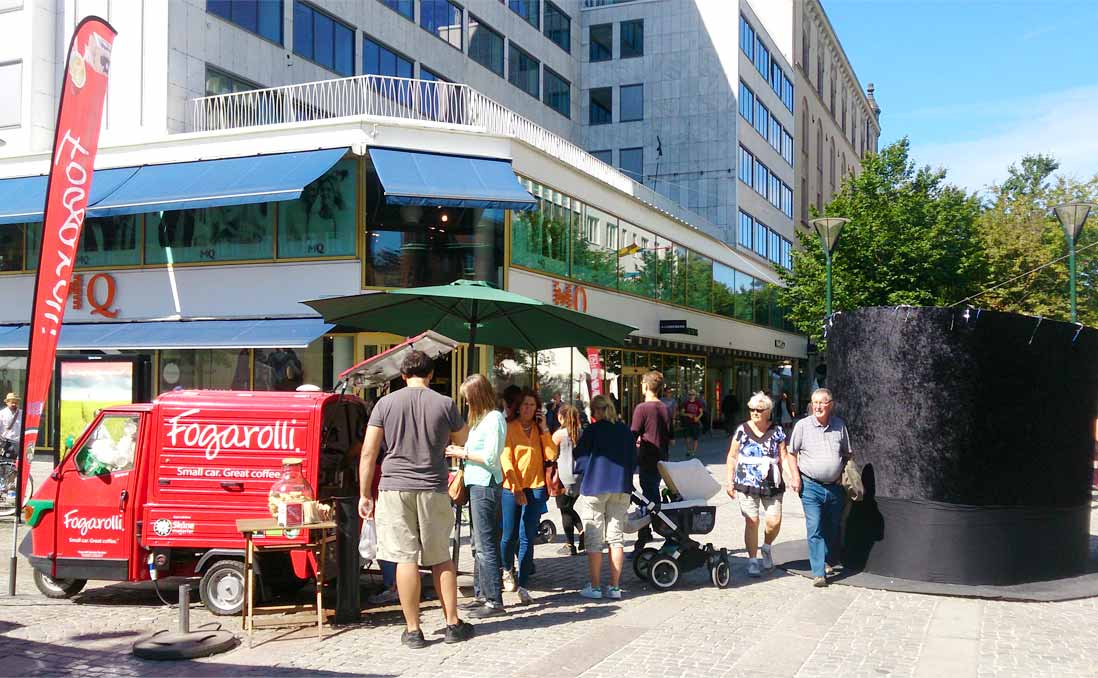
Coffee tricycles in Sweden usually display obvious flags to attract passengers. The black top hat on the right is the installation art limited by the festival. Photo / jellyfish courtesy of
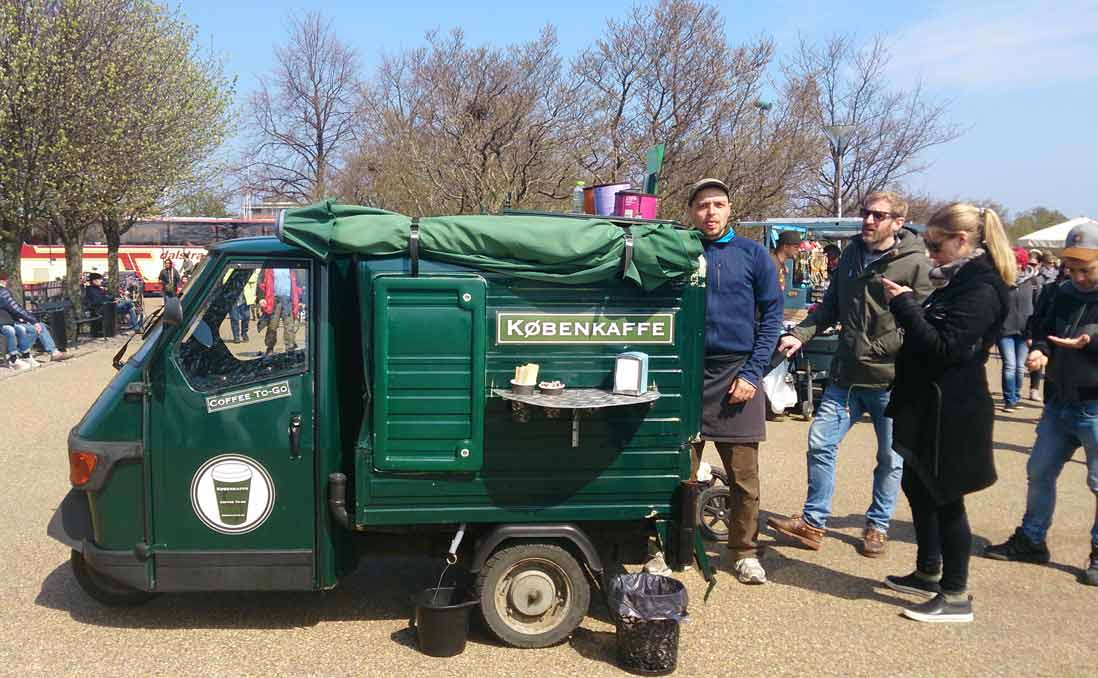
The coffee tricycle that appears at the Cherry Blossom Festival in Copenhagen, there is a marching fu. Photo / jellyfish courtesy of
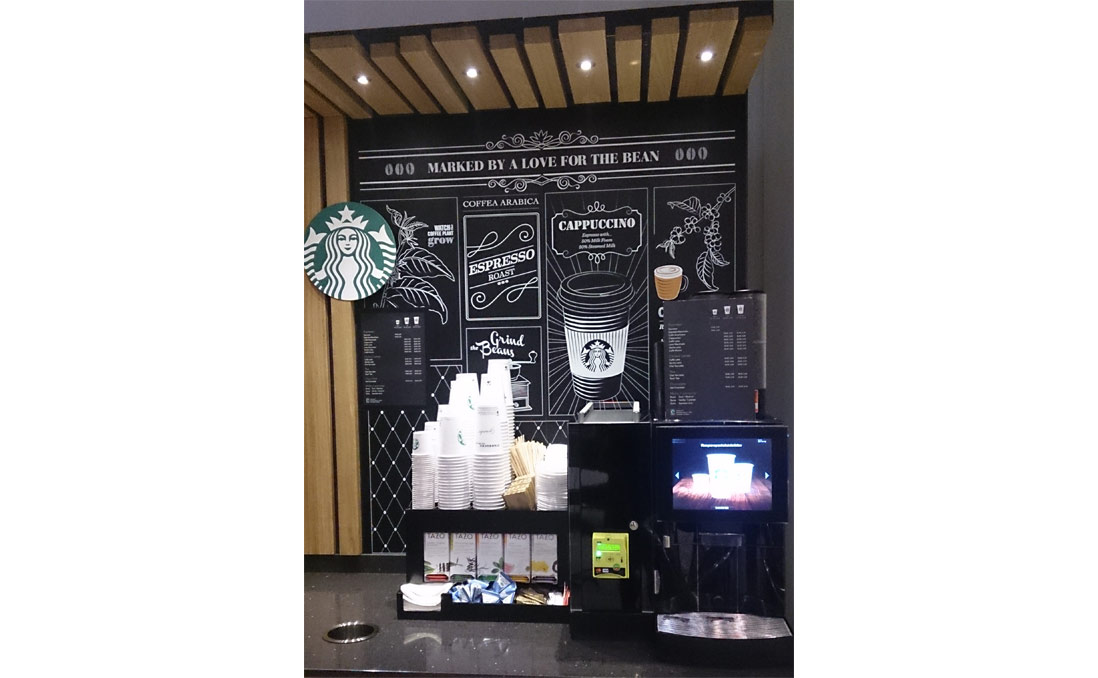
A small shop of Starbucks is taken at Copenhagen Airport. Photo / jellyfish courtesy of
Starbucks wants to expand its territory in northern Europe, and the "small" model seems to be more flexible than "expanding" stores. After all, local chains and independent coffee shops have sprung up, touting their own unique styles: fair trade coffee, organic coffee, hand coffee and award-winning baristas. Wait. Mermaid Youyou among them, she has not yet established a prominent style among many brands, and the price is several pieces more expensive than other chain brands, there is really no reason why Fika must be her.
In addition, many articles have discussed that mermaid shops sell not only coffee, but also "atmosphere". In Sweden, which is good at creating space style, local coffee shops can already meet this demand. Quite subtly, Starbucks' image in Taiwan is close to the top of the famous brand of coffee chain. Because of its high unit price, it has special "weight" in its hands. Consumers can meet their psychological needs by owning a cup of coffee, and it is suitable for gift giving and self-use. However, most Swedes do not show that they are holding famous brands (more likely to show that they are tanned on vacation), so the same method of operation is not applicable.
I hope the store that just closed in the city can find a new place to make a comeback, so that we can continue to buy city mugs, otherwise, it would be nice to set up a cafe shop to stimulate tourism.
Important Notice :
前街咖啡 FrontStreet Coffee has moved to new addredd:
FrontStreet Coffee Address: 315,Donghua East Road,GuangZhou
Tel:020 38364473
- Prev
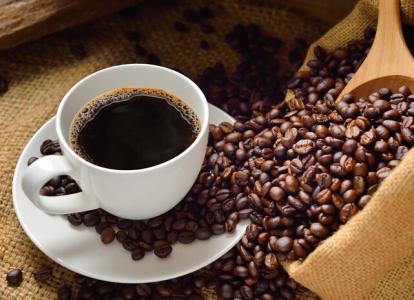
To open a coffee shop, these procedures must be kept in mind, not written down!
Opening a coffee shop is a painful and happy process. Of course, there will be a sense of fun and achievement, but there are more things to worry about and deal with. It's okay to make a temporary mistake, but you shouldn't be in a hurry once you get confused because of inadequate preparation. Here is a list that you need to check the situation of your store every morning except before the official opening of the store.
- Next
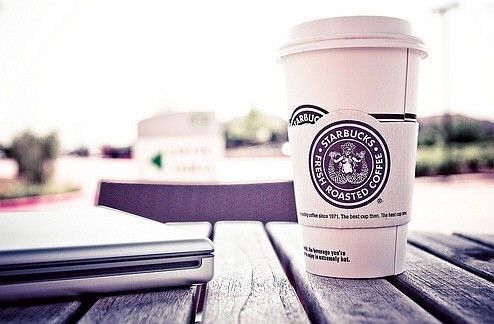
Six principles of Starbucks Cafe location are shared with you.
After selecting the business district, Starbucks will measure the flow of people, determine the main flow lines, select the gathering point, and use the location not far apart as the location of the store. First, layout, and then location I often receive phone calls, the other party said that you hurry to open a shop here, I guarantee that you make money. Gong Ming said that whenever he received such an invitation, his heart was very tangled.
Related
- What documents do you need to go through to open a coffee shop? coffee shop coffee shop certificate processing process
- How to purchase Coffee beans in small Cafe how to choose a suitable supplier for domestic Coffee supply Company
- How to drink Starbucks Fragrance White Coffee? how to make Australian White Coffee? what Italian coffee beans are recommended?
- The Story of Flora Coffee: the name of Flora Coffee Bean and the implication of the Flowers on Florna Coffee
- How much does a cup of coffee cost? How much is the profit of a cup of coffee? What is the profit of the coffee shop in a year?
- Yunnan small Coffee, known as "fragrant Coffee", introduces the characteristics of Alpine Arabica Coffee producing areas in Yunnan, China
- 2023 latest Starbucks full menu price list how much is a cup of Starbucks coffee what is better to drink the most popular hot and cold drinks recommended
- Starbucks different kinds of Coffee Price list Starbucks menu 2023 Top Ten Best drinks in Starbucks
- Starbucks Spring praise Comprehensive matching Coffee Bean theme Story Packaging implication and taste description
- The cost of a cup of coffee latte American coffee cost price and selling price

